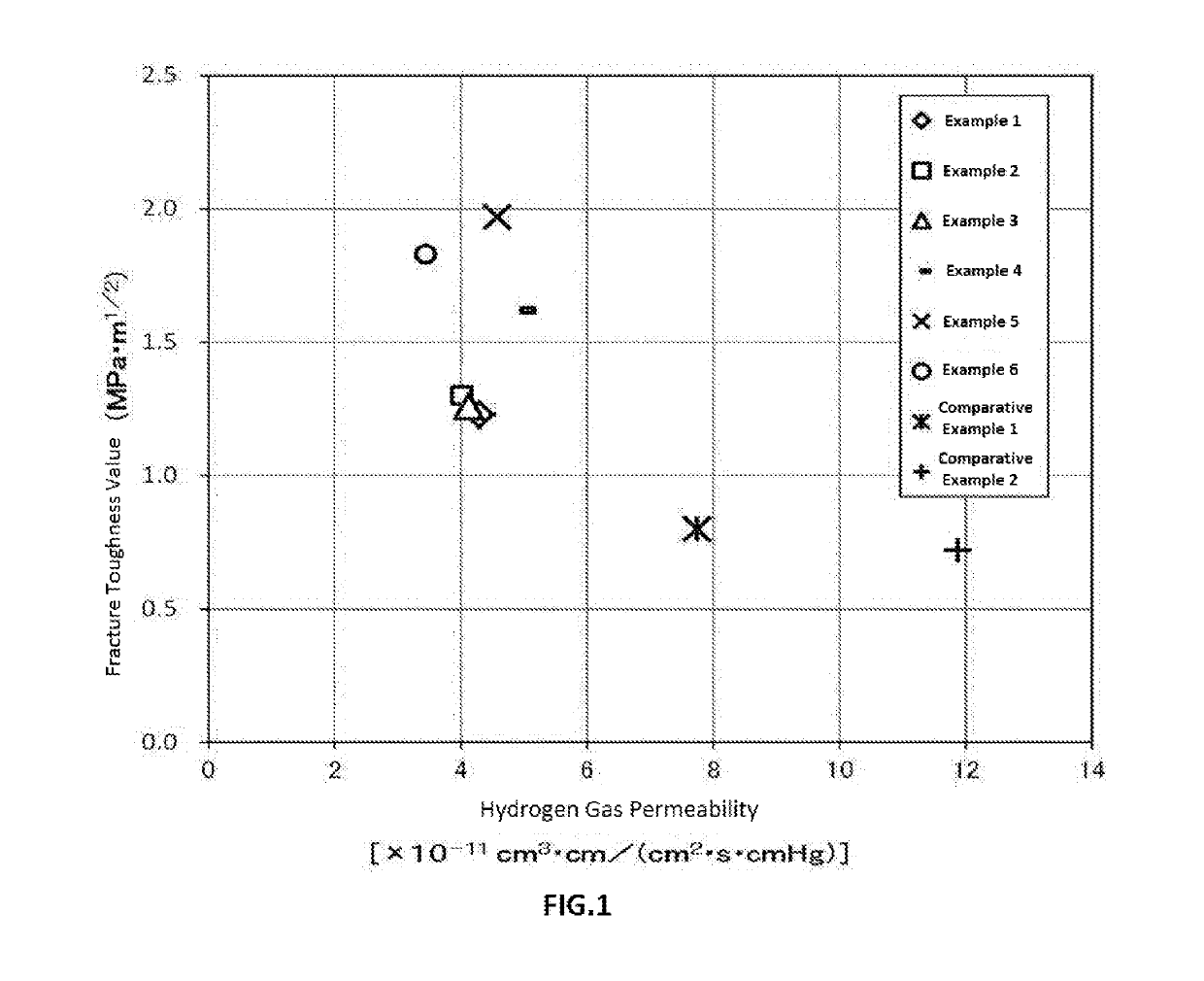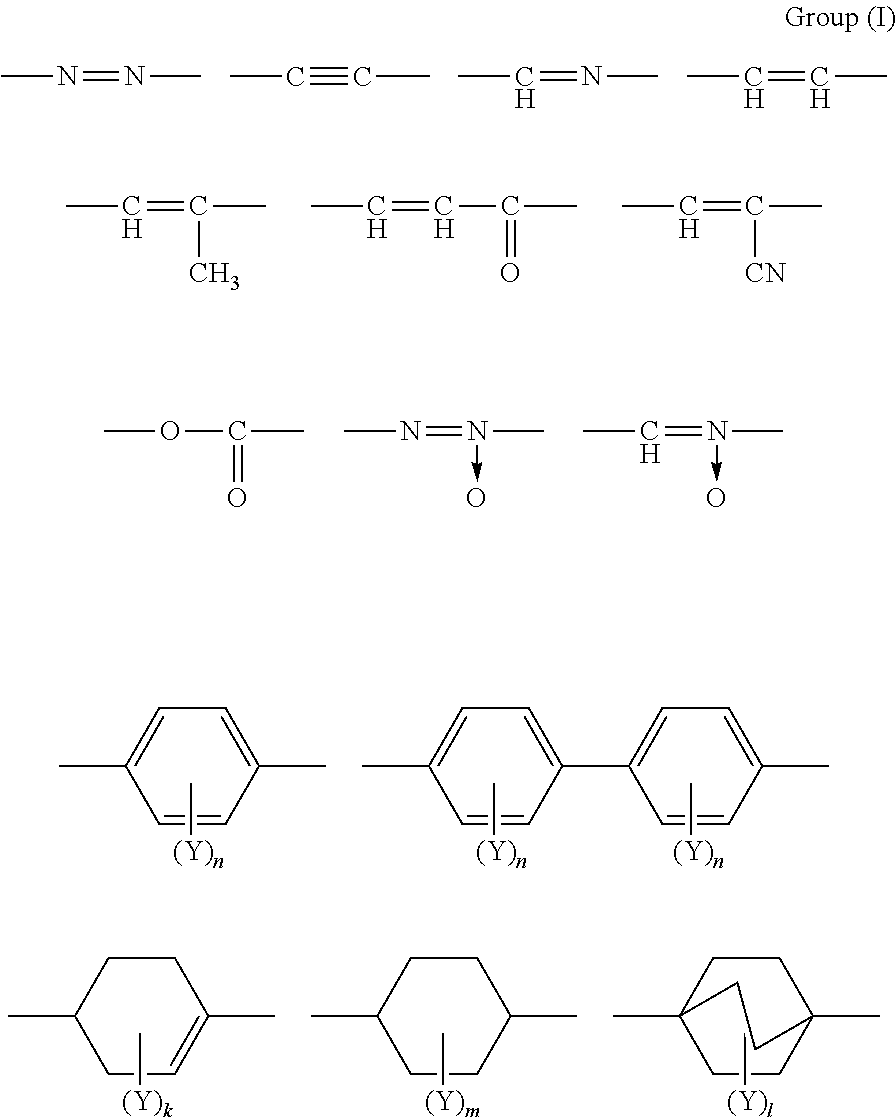Gas barrier material, resin composition, gas barrier member, cured product, and composite material
a technology of gas barrier and resin composition, which is applied in the field of gas barrier materials, resin compositions, gas barrier components, and cured products, can solve the problems of insufficient impact resistance of epoxy resin, low fracture toughness of cured product of epoxy resin, and inferiority of epoxy resin to polyvinyl alcohol copolymer, etc., to achieve excellent heat resistance, hydrogen gas barrier properties, and fracture toughness.
- Summary
- Abstract
- Description
- Claims
- Application Information
AI Technical Summary
Benefits of technology
Problems solved by technology
Method used
Image
Examples
example 1
[0125]Resin A: 78.3 parts by mass, and 4,4′-diaminodiphenyl sulfone (manufactured by Wako Pure Chemical Industries, Ltd.): 21.7 parts by mass were placed in a stainless steel petri dish, and heated to 180° C. on a hot plate. After the resin in the stainless steel petri dish was melted, heating was carried out at 180° C. for 1 hour. After cooling to normal temperature (25° C.), the sample was taken out from the stainless steel petri dish, and heated in an oven at 230° C. for 1 hour to obtain a cured product.
[0126]The obtained cured product was polished by a rotary polishing machine in such a manner to have a thickness of 2 mm, and a test piece for evaluating hydrogen gas permeability was obtained. A cured product was cut into a rectangular parallelepiped of 3.75 mm×7.5 mm×33 mm, and a test piece for evaluating fracture toughness was obtained. Further, a cured product was cut out into a strip of 2 mm×0.5 mm×40 mm, and a test piece for evaluating the glass transition temperature was ob...
example 2
[0127]Test pieces were produced by the same manner as described in Example 1, except that Resin B: 76.4 parts by mass, and 4,4′-diaminodiphenyl sulfone: 23.6 parts by mass were used.
example 3
[0128]Test pieces were produced by the same manner as described in Example 1, except that Resin C: 81.3 parts by mass (non-volatile content), and 4,4′-diaminodiphenyl sulfone: 18.7 parts by mass were used.
PUM
| Property | Measurement | Unit |
|---|---|---|
| glass transition temperature | aaaaa | aaaaa |
| 2θ | aaaaa | aaaaa |
| 2θ | aaaaa | aaaaa |
Abstract
Description
Claims
Application Information
 Login to View More
Login to View More - R&D
- Intellectual Property
- Life Sciences
- Materials
- Tech Scout
- Unparalleled Data Quality
- Higher Quality Content
- 60% Fewer Hallucinations
Browse by: Latest US Patents, China's latest patents, Technical Efficacy Thesaurus, Application Domain, Technology Topic, Popular Technical Reports.
© 2025 PatSnap. All rights reserved.Legal|Privacy policy|Modern Slavery Act Transparency Statement|Sitemap|About US| Contact US: help@patsnap.com



